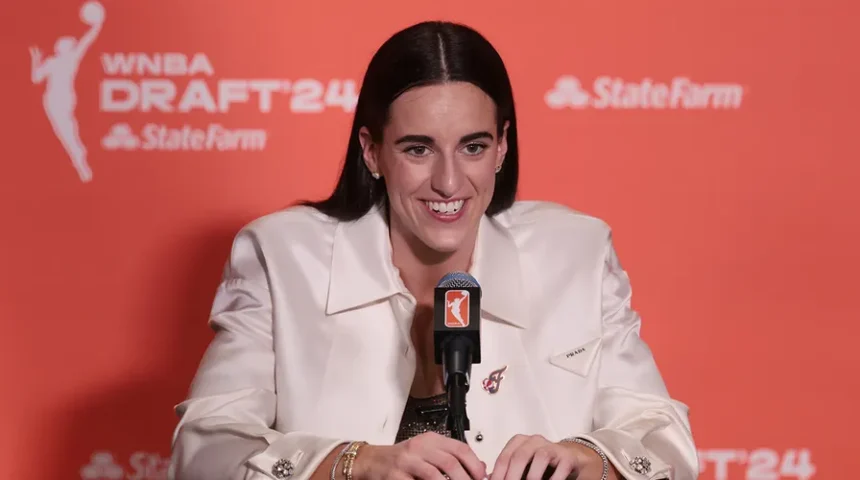Caitlin Clark may not have touched a basketball in months, but that hasn’t stopped her from dominating headlines—and wallets. The Indiana Fever guard is out here making history without even lacing up her sneakers. And the latest? Oh, just casually setting a record with a rookie card selling for a jaw-dropping $234,850 at a Goldin auction.
Yes, you read that right. A piece of cardboard with Clark’s face on it now holds the title of the most expensive WNBA player card ever sold. And if that wasn’t impressive enough, it’s the second-highest amount anyone’s ever shelled out for a female athlete card. Somewhere, Serena Williams might be clutching her pearls.
The Money Magnet of the WNBA
Here’s the kicker: Caitlin Clark doesn’t just break records; she is the record. According to the human calculator himself, Dr. Ryan Brewer, an associate professor of finance at Indiana University Columbus, Clark was responsible for a staggering 26.5% of the WNBA’s revenue last season. That’s right, folks—over a quarter of the league’s earnings came courtesy of this 22-year-old phenom.
Take a moment to let that sink in. Brewer, clearly floored by his own findings, described the numbers as “so staggering, they don’t even seem real.” Honestly, neither do Clark’s handles on the court, but here we are.
From merchandise sales to ticket stubs, Clark has turned the WNBA into the hottest show in town. One out of every six tickets sold last season was for a game she played in, and the league’s overall viewership skyrocketed by 300%, all thanks to her. Indiana Fever games alone accounted for 45% of the league’s broadcast value, and her star power helped push league sales up by 500%.
Indiana Fever’s Attendance Fever
If you thought Beyoncé packed arenas, get this: The Fever became the first WNBA team to host over 300,000 fans in a single season, averaging more than 17,000 screaming supporters per game. When Clark hit the court, viewership numbers soared to an average of 1.2 million viewers per game, a jaw-dropping 200% increase compared to games where she didn’t play.
Brewer couldn’t help but gush: “Now, let’s take a breath for a minute and think about this. That’s for one year. We’re talking about one player.”
Oh, and let’s not forget the impact on Indianapolis itself. Brewer estimates Clark generated upwards of $36 million for the city’s economy last season alone. Basically, she’s a walking stimulus package in Nikes.
The Reality Check
Now for the not-so-glamorous side of this fairy tale. Despite being the WNBA’s revenue queen, Clark’s paycheck last season was a measly $76,535—barely enough to cover the resale value of her own rookie card. Compare that to Victor Wembanyama, her NBA rookie counterpart, who raked in a cool $13.8 million, and it’s enough to make you want to flip a table.
The league’s collective bargaining agreement (CBA) caps player earnings, so even if Clark’s star burns brighter than Times Square, she can’t cash in as much as she should. Brewer pointed out the cold, hard truth: “The corporate side is waiting to see if these numbers stabilize rather than just spike and drop again.” Translation: They’re playing it safe while Clark does all the heavy lifting
The Takeaway
Caitlin Clark is rewriting the WNBA narrative, one record (and auction) at a time. From being the league’s most bankable star to inspiring a new generation of fans, her impact is undeniable. Now, if only the league could figure out how to pay her what she’s worth. Until then, we’ll be here, marveling at her rookie card price tag and wondering how she does it all without breaking a sweat.
